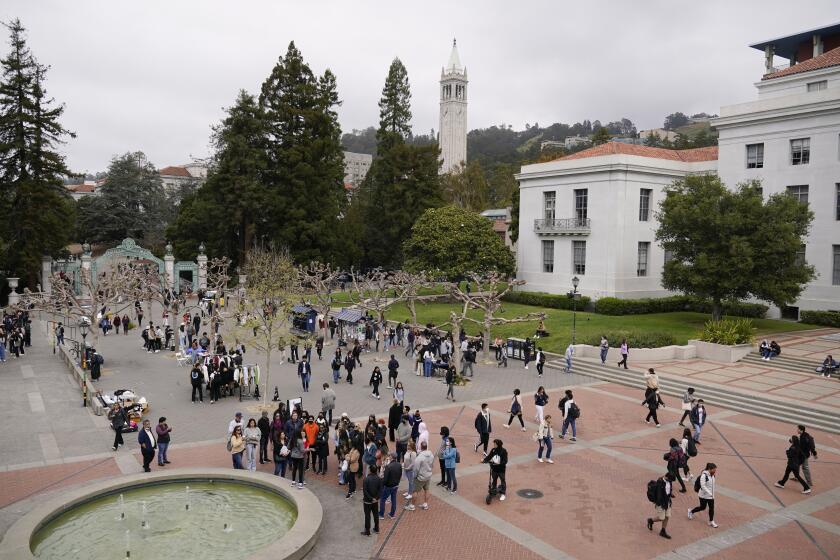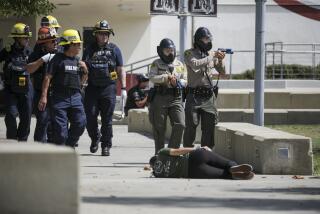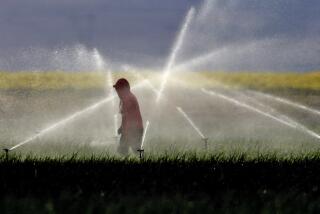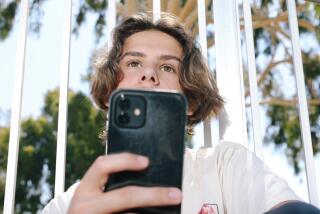Fake blood and gunfire? A California lawmaker wants to create rules for shooter drills

- Share via
At a Fresno County elementary school, a masked man with a fake gun carried out an active-shooter drill without most of the teachers and parents being informed ahead of time. At San Marino High School, police officers planned to fire blanks to mimic the sound of gunfire, but the drill was ultimately canceled over concerns of traumatizing students.
More recently, a principal at a San Gabriel elementary school was placed on a leave of absence after allegedly using her fingers to mime holding a gun and pretending to shoot kids, telling them, “Boom. You’re dead.”
The rise in active-shooter drills at American schools has coincided with the growing phenomenon of mass shootings in the U.S., as well as media coverage focused on school massacres including Columbine, Sandy Hook and Uvalde. These drills have taken place at 95% of U.S. public schools as of the 2015-16 school year, according to the Education Department’s National Center for Education statistics.
State law requires California schools to implement “multi-hazard” drills, such as for fires and earthquakes, but offers little guidance on how to conduct an active-shooter drill.
The U.S. Department of Education launched an investigation of UC Berkeley for alleged discrimination involving shared ancestry.
Assembly Bill 1858, introduced by Assemblymember Christopher M. Ward (D-San Diego) last week, would standardize active-shooter drills in schools and direct the state’s Department of Education to update its guidance.
AB 1858 would require schools to notify parents about an active-shooter drill the same week it would take place, notify parents right after the drill has occurred, make drills age-appropriate for students, conduct a school-wide announcement that a drill is about to start, and provide local resources after the drill to address any potential issues raised by parents and students.
Using simulated gunfire in the drills also would be prohibited.
“It’s an unfortunate reality that we’re in a state of affairs where guns are too prevalent in our community and harms are inflicted upon school communities,” Ward told The Times in an interview last week. As schools have tried to be proactive about the drills, the Assembly member said, there’s been “a wide range of how a drill may be designed, [including] simulated school shootings where you don’t know if that person’s real, students lying on the floor, and using fake weapons and blood.”
Ward also referred to instances in other states in which cellphones were confiscated from students during an active-shooter drill, making it impossible for them to contact their parents.
“It’s important to have this [legislation] because you want to have a sense that you’re being mindful of the mental health needs of students,” Ward said. “That information and communication is key when you’re dealing with a sensitive subject.”
Some say active-shooter drills are best skipped altogether.
Everytown for Gun Safety, a gun violence prevention organization, recommends against active-shooter drills, saying they’re associated with an increase in depression, stress, anxiety and physiological health problems among children as young as 5 years old, as well as teachers, high school students and parents.
The organization notes that although only 0.2% of gun deaths occur at school sites, at least 40 states require active-shooter drills at their schools.
“In the absence of any strong conclusive evidence on drills’ effectiveness at ensuring safety during actual active shooter incidents,” the organization wrote in a 2020 report, “Everytown urges school decisionmakers to assess whether the potential but unproven benefits of these drills outweigh their known collateral consequences.”
More to Read
Sign up for Essential California
The most important California stories and recommendations in your inbox every morning.
You may occasionally receive promotional content from the Los Angeles Times.












